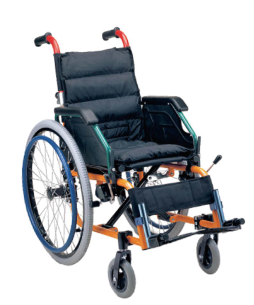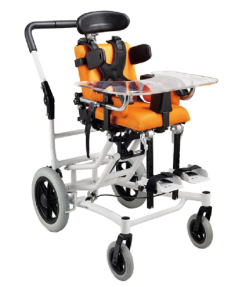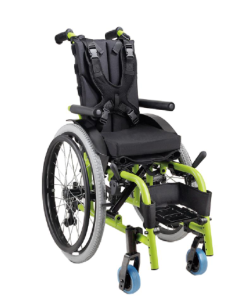Escorting growth: three golden rules for choosing children's wheelchairs
In the children's rehabilitation products market, wheelchairs are the "legs" that help special children walk out of the house. Faced with a wide variety of children's wheelchair products on the market, parents often fall into a dilemma when purchasing. This article will analyze the three core dimensions that need to be focused on when purchasing children's wheelchairs from the perspectives of ergonomics, child development psychology and rehabilitation medicine, to protect the growth of special children.
1. Adjustability: Smart design that grows with you
Children are in a rapid development stage, and the fixed structure of ordinary wheelchairs may become a shackle that restricts their growth. The seat depth of a high-quality children's wheelchair can be adjusted by 3-5cm, the backrest height has an adjustment space of more than 10cm, and the armrests support multi-angle adjustment. The "growth wheelchair" launched by an international brand can achieve stepless adjustment of the seat width from 28cm to 38cm through modular design, and with the liftable footrest system, it can continuously adapt to the physical changes of children aged 6-12.
When choosing a wheelchair, you should focus on the "four-dimensional adjustment system" of the wheelchair: seat width, depth, backrest height and armrest height. Data from a Japanese medical equipment laboratory showed that the incidence of scoliosis in children using adjustable wheelchairs was 42% lower than that of children using fixed wheelchairs. It is recommended to have professional adaptation and adjustment every six months to ensure that the wheelchair fits the body perfectly.

2. Functional adaptation: building barrier-free life scenarios
Children's wheelchairs need to cope with complex life scenarios: they need to be compact and flexible in the classroom and stable and safe during outdoor activities. A case from a rehabilitation center shows that a wheelchair equipped with detachable armrests improves the classroom learning efficiency of an 8-year-old child with cerebral palsy by 30%; a wheelchair with a front wheel suspension system allows a wheelchair basketball player to complete an emergency stop and turn. When purchasing, you should choose the functional configuration according to the usage scenario: the indoor type focuses on steering flexibility and the weight is controlled within 15kg; the outdoor type needs to be equipped with a shockproof system and a large-size rear wheel.
The control system is the core of functional adaptation. Manual wheelchairs should choose a push ring diameter that matches the child's arm span (recommended 36-42cm), and electric wheelchairs should be set with a multi-level speed regulation function. A smart wheelchair certified by the US FDA achieves 0.5-second emergency braking through a gravity sensor, and is equipped with a voice control system that allows children with speech disorders to control it independently.

3. Psychological care: visible support for growth
Child psychology research shows that the appearance of a wheelchair directly affects the user's social confidence. A German medical institution found that personalized wheelchairs increased children's willingness to use them by 65%. In a special education school in Hangzhou, star-themed wheelchairs allow autistic children to actively communicate with their classmates. In addition to basic colors, you should also pay attention to customizable designs when purchasing: Velcro decorative areas, LED ambient light strips, personalized nameplates, etc.
It is recommended to establish a "participatory purchase" model: prepare 3-5 pre-selected options and let children participate in the final decision. The AR matching system launched by an international brand allows you to preview different color matching effects by scanning with your mobile phone. Be careful to avoid overly cartoony designs, choose a simple and fashionable style that suits the age characteristics of children, and leave room for growth transition.

In the special test of choosing a wheelchair for children, the correct answer is always child-centered. When we use adjustability to protect physical growth, use functional adaptation to expand the radius of life, and use psychological care to cultivate the spiritual world, the wheelchair is no longer a cold instrument, but a wing that helps you fly. Regularly communicate with rehabilitation therapists about the usage and establish a dynamic mechanism of "use-feedback-adjustment" so that every child can explore the infinite possibilities of life with the most suitable support.
